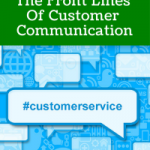Too many novice social media marketers focus on the wrong metrics when measuring the success of their social media campaigns. While it’s nice to get a lot of likes on your posts, they aren’t worth much on their own. Don’t mistake popularity for validation when it comes to your brand’s goals. In fact, don’t mistake likes for popularity in the first place. Instead, determine your goals and then apply strategies that will help you get to those goals. We’ll explain a few of the key metrics today.
- Engagement
Likes are nice, but they alone aren’t enough to give you a good indication of audience engagement. What’s more important than likes is active participation, like comments and replies. That kind of engagement serves as proof that your audience is invested in your content. The number of shares will help you determine what content is perceived as valuable or interesting by your audience. Review your content to see what receives the most comments and shares. Do they have anything in common, like subject matter or posting time? What are the commonalities among your less-popular, less-shared posts?
- Awareness
Again, this ties back to defining specific goals for your campaign. You don’t want to waste time, effort, and resources on a campaign designed to increase likes if reach is more relevant to your goals. To clarify, impressions are the number of times that someone sees content, while reach is the number of unique individuals who see it. If Ward sees an ad for Daughters of the Dragon Sriracha Marinade three times, that ad has three impressions and a reach of one. For some brands and under some circumstances, impressions might be paramount; for other brands and circumstances, reach matters more. Brands that want to broaden their audiences and find new consumers should focus on reach, while brands that want to strengthen their message to their existing audiences should focus on impressions.
- Conversions
How many users were so impacted by your content or message that they took action? That is conversion in a nutshell. To determine this, you’ll need to have already determined your goals. Note that this should be more than “complete a purchase.” Do you want users to share your content? Do you want users to go to your website? Enter a contest? Fill out a survey? Measuring conversions can be as simple as tracking click rates. Take Joy’s law firm as an example. She ultimately wants prospective clients to come in for a free consultation at Meachum & Gao, but she understands that achieving this will take many steps. Therefore, her immediate conversion goal is for people to click through links from the firm’s social media profiles to the firm’s webpage. By tracking the click rate, she can see what content is most compelling to prospective clients. Armed with this information, she will be able to create enticing content that will motivate prospective clients to contact her office.
Remember that your goals will probably change over time, so it’s important to periodically reevaluate your strategies. Above all, never get too comfortable! Savvy social media marketers know that you must continually adapt and evolve to keep up with current trends as well as the needs of your consumers.
What metrics have you found to be most valuable for your marketing strategy? Share with us in the comments!











